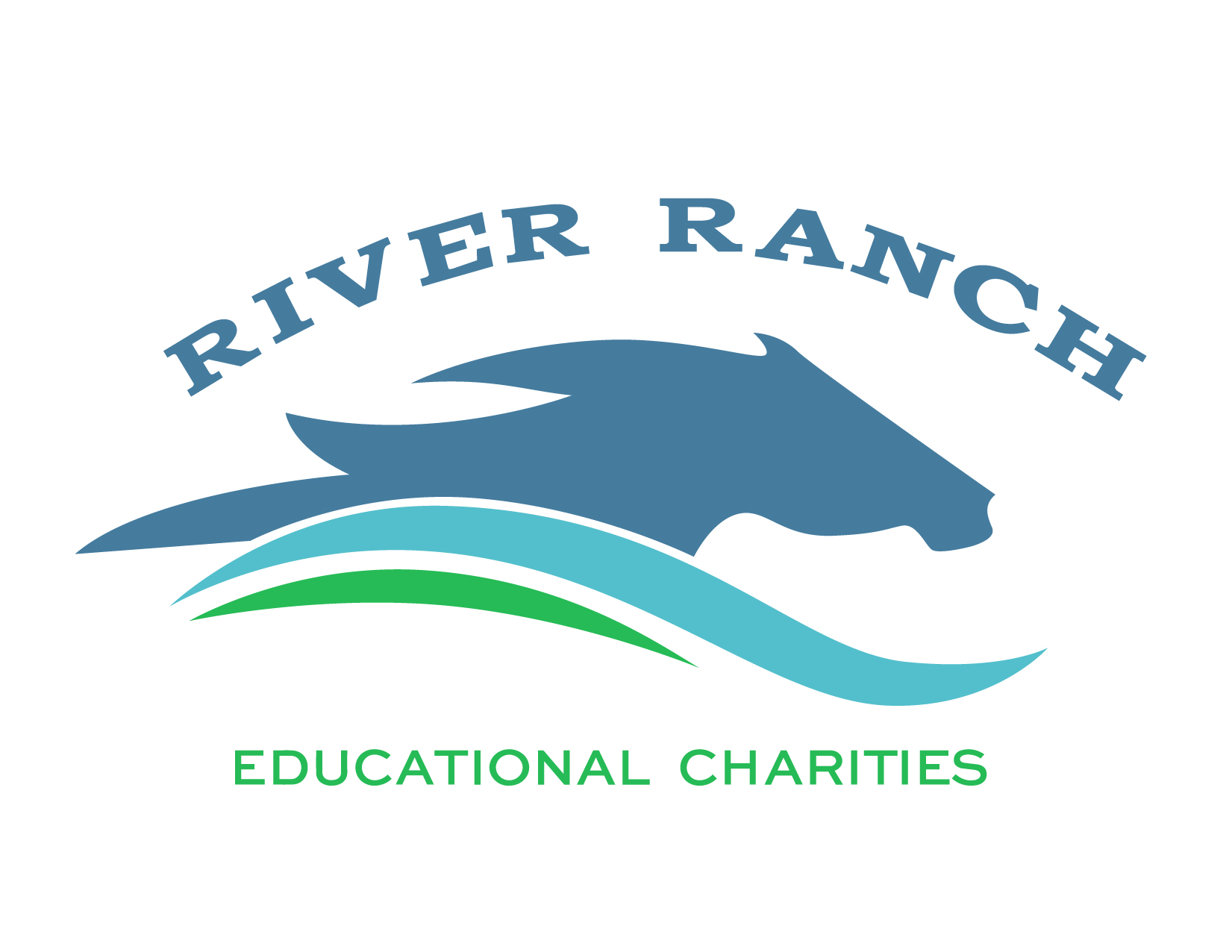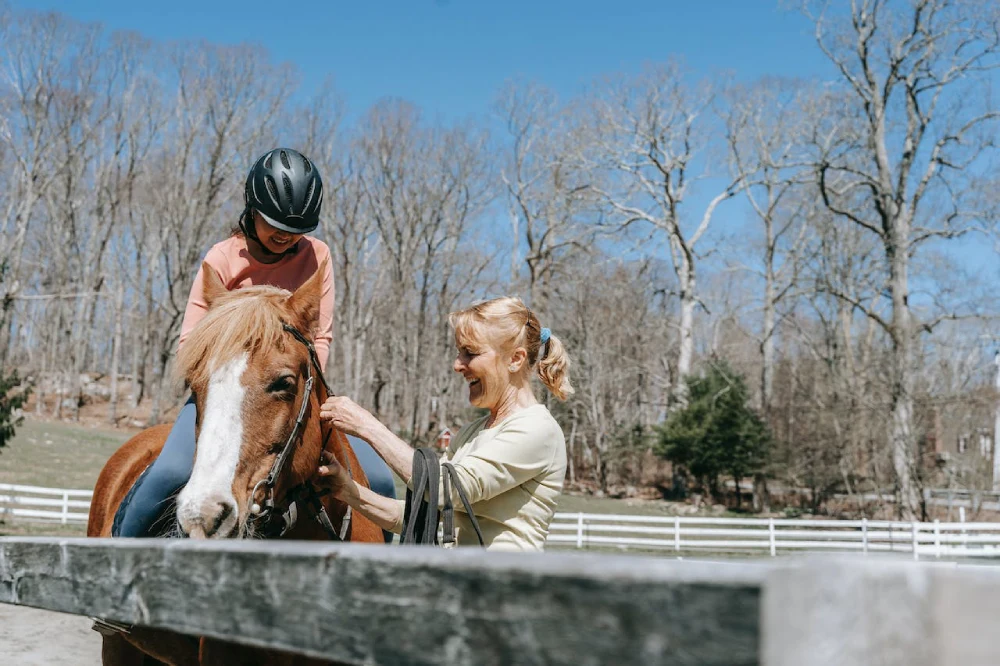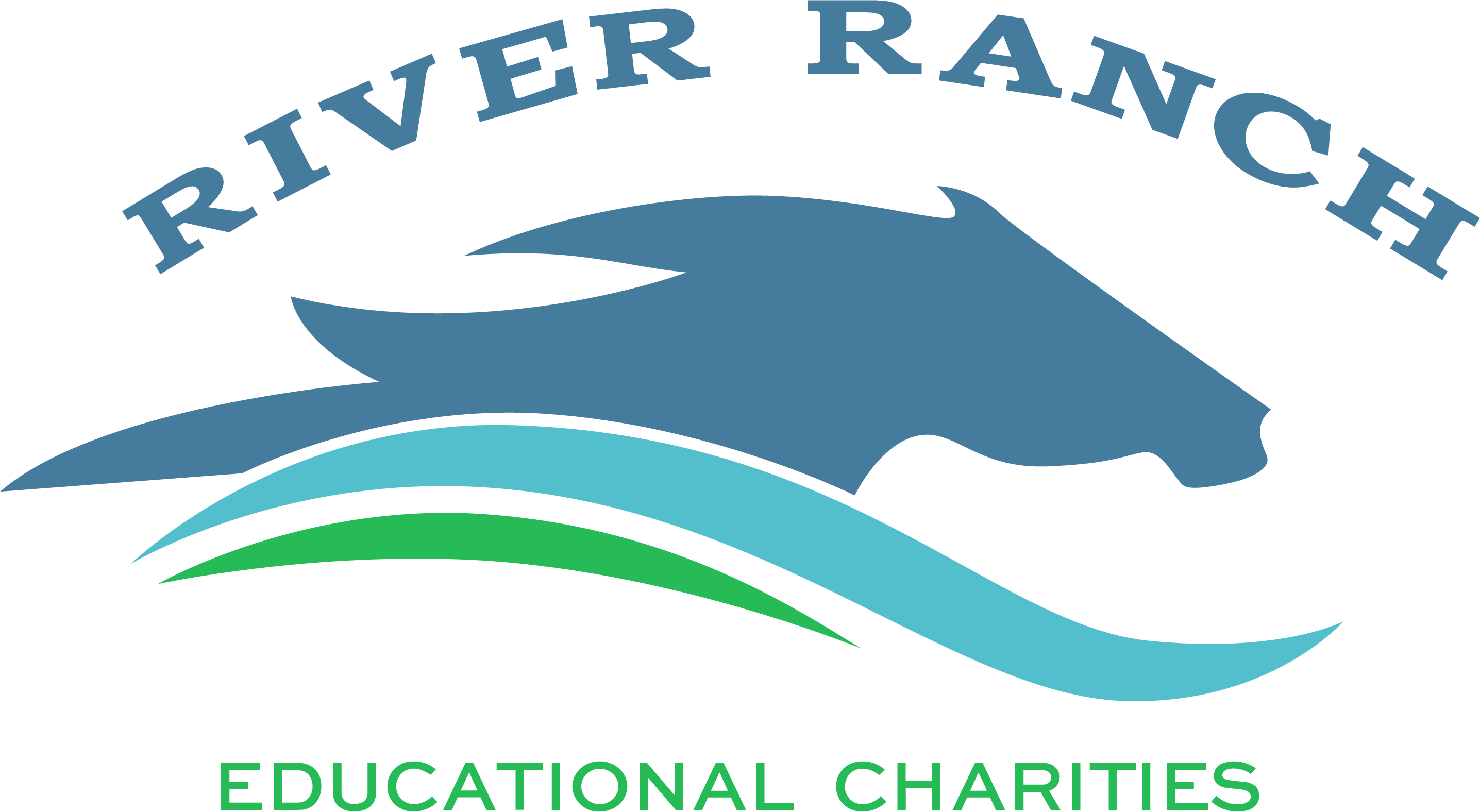Working with horses is beneficial for our physical and mental health. A study conducted by Mississippi State University showed that “equine interactions provide multifaceted benefit potential ranging from mental to physical health.” Additionally, the American Heart Association states that not only does horseback riding improve circulation and lower blood pressure, it also helps riders to relax and build decision-making skills.
For those who want to improve a specific skill, such as increased emotional awareness or assertiveness, equine assisted learning can be a great tool to work towards their goal. Below are a few of the most commonly-asked questions about equine assisted learning and their answers.
What is Equine Assisted Learning?
Equine Assisted Learning is a type of hands-on skill building that leads clients to develop new skills useful in life and work. It can be used in a multitude of settings, from the school-aged child who struggles with attention deficit/hyperactivity disorder to the team of corporate executives who want to gain leadership, problem solving, and creative thinking skills. Equine assisted learning can be facilitated in an individual or group environment depending on each unique scenario. Although clients learn horsemanship skills over the course of the equine assisted learning activities, that is not the primary goal. Activities usually center around relationship building and problem solving, and follow cues from both the horse and the human to make each experience beneficial for everyone.
Who Can Benefit from Equine Assisted Learning?
Most equine assisted learning clients are children and adolescents who struggle in a typical classroom environment. Through experiential learning activities involving horses, the client gains self-confidence, concentration, and leadership skills. Clients do not have to have a formal diagnosis to benefit from equine assisted learning; however, it has been used to facilitate growth and skillbuilding for individuals with the following conditions:
- Attention Deficit/Hyperactivity Disorder (ADHD)
- Autism Spectrum Disorder
- Anxiety Disorder
- Depression
- Eating Disorders
- Learning Disabilities
- Post Traumatic Stress Disorder (PTSD)
As mentioned above, anyone with personal and professional goals can utilize equine assisted learning to get closer to achieving their dreams!
What Does Equine Assisted Learning Look Like?
Each session looks different depending on the goals of the learning activity. However, they will all involve some sort of hands-on interaction with a horse through groundwork activities like leading or grooming, or mounting and riding the horse. Below are just a few examples of equine assisted learning activities:
- Haltering: For this equine assisted learning activity, an equine expert will explain the proper, non-aggressive way to put a halter on a horse. They will explain to the client that if the horse does not want to be haltered, they don’t have to force it. Instead, the client can spend time in the stall with the horse. Explaining the importance of interpreting non-verbal cues, the facilitator will open the door for increased communication between the horse and the client.
- Grooming: The equine assisted learning instructor will explain the different grooming tools to the client, and allow the client to use them on the horse. However, grooming is not the main purpose of this exercise. The facilitator will use this opportunity to ask questions like “which grooming tool do you think the horse likes best?” and “what is the horse communicating to you when he moves in that way?” These open-ended questions allow the client to interpret clues from the horse, build trust with the horse, and increase their horse-handling confidence.
- Breathing with the horse: Calling attention to the horse’s slow, resting breath, the equine facilitated learning facilitator will have the client focus their own breath to match the rate of the horse’s breathing. This not only helps calm the client, it also brings a greater sense of teamwork and bonding between human and horse.
- Feeding: Clients will learn how to feed the horse and can even try feeding the horse out of their own hand. This enables trust and cooperation between the horse and equine assisted learning client!
Where Can I Get Equine Assisted Learning Services?
There are many programs throughout the country, and even around the world, that offer equine assisted learning activities. Here is a compilation of just a few of these programs:
- Healing Hooves (Southwest Ranches, Florida)
Healing Hooves in Southwest Ranches, Florida, is committed to providing a safe experiential learning environment for their equine assisted learning clients. According to their website, they encourage “participants [to] use past experience, trial and error, reflection, generalization and metaphors to facilitate learning.” To learn more about Healing Hooves, visit their website at https://www.therapybarn.org/.
- Common Ground at Paradise Stables (Mount Airy, Maryland)
This organization, located about one hour north of Washington, D.C., proudly serves “military, first responders, corporate professionals, and numerous groups, including people at-risk.” Each equine assisted learning session consists of three parts: a program and safety briefing, time in the arena with the horses, and a debrief and reflection at the end. You can read more about their program or get involved at https://www.commongroundps.org/.
- Healing Strides of Virginia (Boones Mill, Virginia)
Healing Strides of Virginia provides equine assisted learning activities to “provide open and honest learning opportunities for individuals who are looking for personal support to reach personal goals,” according to their website. Along with equine assisted learning, they also provide equine assisted life coaching and equine assisted psychotherapy. Healing Strides of Virginia has been around since 1991 and occupies 28 acres in Virginia’s Roanoke Valley. To see all that Healing Strides of Virginia has to offer, visit their website: https://www.healingstridesofva.org/.
- Wild Hearts Equine Therapy (Seneca, South Carolina)
Located in the foothills of the Blue Ridge Mountains, Wild Hearts Equine Therapy “[brings] together experienced and loving professionals with sensitive horses to foster unlimited growth potential.” They offer equine assisted learning to help people reach their personal and professional goals in a safe, supportive, and positive environment. To read more about the great work Wild Hearts Equine Therapy is doing, go to https://www.wildheartsequinetherapy.org/.


